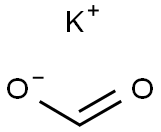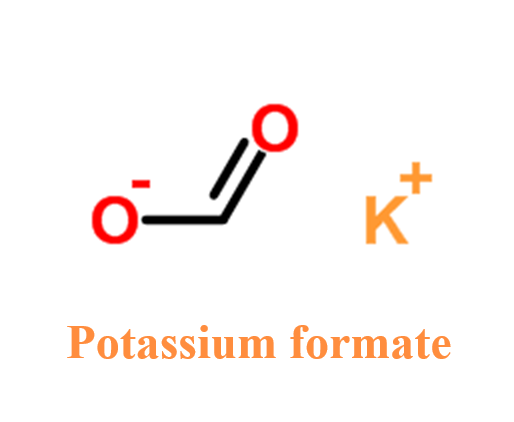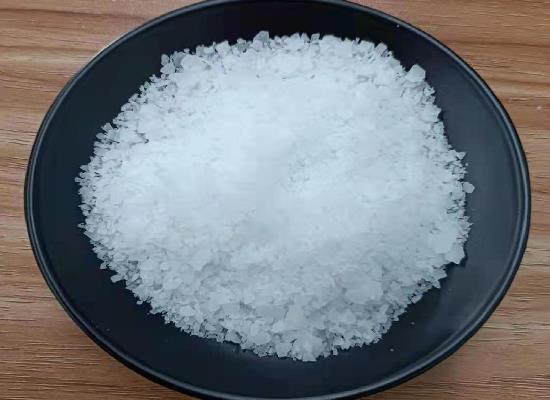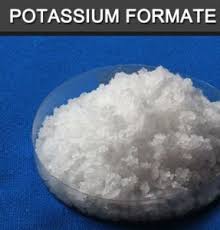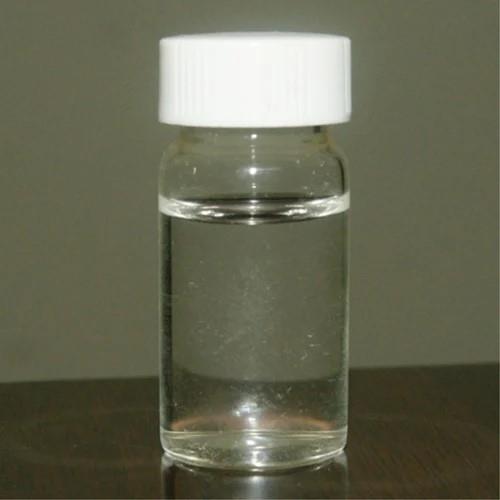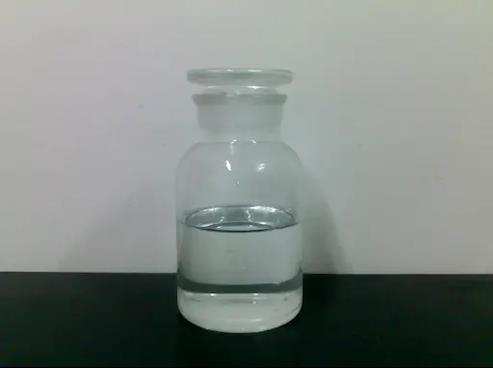Potassium formate: Applications and degradation
General description
Potassium formate HCOOK is a salt of formic acid. It is a useful chemical compound in the production of potassium metal and in the oil and gas industry, often in aqueous solution (alone, or mixed with cesium formate). It can be prepared by absorbing carbon monoxide in 50-80% KOH at 100-200°C at a partial pressure of CO > 690kPa. Potassium formate is very soluble in water. The saturated aqueous solution at 18°C contains 76.8% PF by weight. Aqueous solution of PF may be readily manufactured from formic acid and KOH. Potassium formate is already widely in use in the oil-drilling industry and as an ice removing agent for aeroplanes. One remarkable advantage is it is environmentally friendly. Potassium formate also can be prepared by neutralizing a solution of formic acid in methanol with Potassium carbonate. Because the solution contains water, evaporation will normally not result in the crystallization of Potassium formate. However, by drying the solution in a desiccator over P2O5, large prismatic crystals of Potassium formate appeared. Because of their deliquescent nature the crystals had to be handled with considerable care. A specimen 0.5 × 0.6 × 0.6 mm was cut from a large crystal and sealed in a capillary, partly filled with P2O5 [1]. Its appearance is as follows:
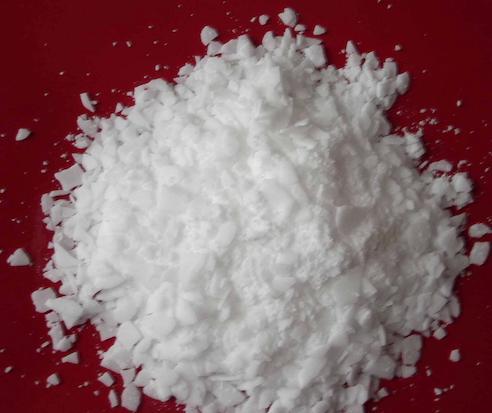
Figure 1 Appearance of Potassium formate
Applications
Potassium formate is mainly used to prepare water-bearing oil well injection fluids. In the late 1990s, potassium formate was applied to drilling and completion fluids, especially in high-density drilling and completion fluid systems, and achieved good results. The preparation of drilling fluid system with potassium formate has outstanding advantages such as strong inhibition, good compatibility, environmental protection, and reservoir protection. The on-site application results indicate that potassium formate inhibits the hydration of clay. It has many advantages. The following have already been reported: (i) the biological oxygen demand of formate is lower than that of acetates or urea, (ii) the degradation of formate occurs also at low temperatures, (iii) formate induces less leaching of trace metals from roadsides than do sodium chloride and acetates, and (iv) the taste level of potassium formate in ground water is lower than that of conventional road salt and potassium acetate (CH3COOK) [2]. In our earlier sand and gravel column experiments [3], potassium formate was found to be the least harmful deicing chemical with respect to ground water quality when compared to sodium chloride, calcium chloride (CaCl2), magnesium chloride (MgCl2), calcium magnesium acetate [Ca3Mg7(CH3COO)20], and potassium acetate.
Degradation
Potassium formate can be degradated in the unsaturated zone of a sandy aquifer [4]. The formate was effectively removed (98%) in a sandy lysimeter after a cold winter period. The disappearance of formate was accompanied by the formation of carbon dioxide and bicarbonate in the percolating water indicating biodegradation of formate. Potassium seemed to be adsorbed (99%) in the soil of lysimeter and the ion exchange between potassium and a variety of monovalent and divalent ions in mineral particles in the aquifer material was assumed to be responsible for the leaching of barium, calcium, magnesium, and sodium from the soil material.
If potassium formate is applied as a deicer for several years, potassium may leach into the ground water. The direct application of alkaline potassium formate at high concentrations (50 wt. %) destroyed most of the plants present on the soil surface of the lysimeter. If potassium formate is used for road deicing, impacts on the roadside vegetation are likely to be less critical, however, because of the dilution effect of melt water and precipitation. Nevertheless, further research at field scale is still needed for instance on the impacts of potassium formate on vegetation, road surfaces, and leaching of heavy metals from soil before allowing the widespread use of formate over Finnish shallow sandy aquifers.
References
[1]Bats J W, Fuess H. Potassium formate[J]. Acta Crystallographica Section B: Structural Crystallography and Crystal Chemistry, 1980, 36(8): 1940-1942.
[2]Kivela¨, H., A. Nenonen, T. Nyste′n, P. Hellste′n, and H. Tuorila. 2003. Alternative de-icing salts taste only when used at high concentration. (In Finnish.) Vesitalous 1:18–21.
[3]Hellste′n, P., and T. Nyste′n. 2003. Migration of alternative de-icers in unsaturated zone of aquifers—In vitro study. Water Sci. Technol. 48(9):45–50.
[4]Hellstén P P, Kivim?ki A L, Miettinen I T, et al. Degradation of potassium formate in the unsaturated zone of a sandy aquifer[J]. Journal of environmental quality, 2005, 34(5): 1665-1671.
You may like
Related articles And Qustion
Lastest Price from Potassium formate manufacturers

US $1200.00-1100.00/ton2025-08-12
- CAS:
- 590-29-4
- Min. Order:
- 1ton
- Purity:
- 99%
- Supply Ability:
- 1000T/M

US $1200.00-1100.00/ton2025-08-12
- CAS:
- 590-29-4
- Min. Order:
- 1ton
- Purity:
- 99%
- Supply Ability:
- 1000T/M
